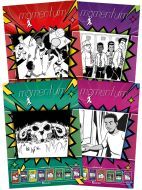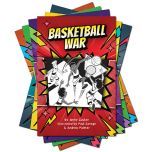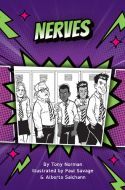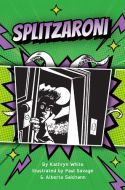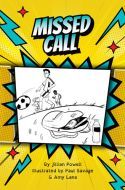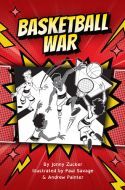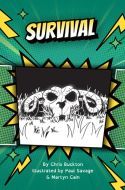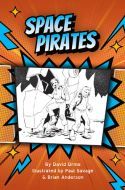Momentum: Dyslexia-friendly graphic novels
In the discussion around what makes a ‘proper book’ that is worthy of a school library, graphic novels have historically been kept at arm’s length. However, attitudes to graphic novels in schools are rapidly changing, and concerns about their ability to provide an enriching reading experience are being rightfully dispelled. Graphic novels are essentially a sequence of images and short bursts of text working in harmony to tell a story. The image frequency provides opportunities to infer emotion and tone in ways that aren’t always there in a standard novel. The presence of sequential boxes also really helps to focus the reader’s concentration on the trajectory of the story.
It's true that there are some elements of graphic novels that can be a problem for more struggling readers and those with dyslexia or other information-processing difficulties. For example, graphic novels are often very visually busy, making them potentially overwhelming. The order of the text and speech boxes can jump around and there is often a variety of different fonts of different sizes used, which makes letters inconsistent and therefore harder to recognise. Graphic novels are known for their use of capital letters, which the British Dyslexia Association says can be more difficult to read than lowercase letters. Graphic novel style also includes bold imagery and statements, but the dark text on bright white backgrounds routinely used to create this effect can be visually dazzling and distracting for people with reading difficulties.
As ever, we had these readers in mind when creating our new graphic novel series, Momentum. Momentum was born in response to the increasing demand for very low-level, easily accessible fiction for both primary school and secondary school readers, who have fallen further behind perhaps due to the events of recent years. As reading is the gateway to all other types of learning, Badger’s goal is to publish fiction interesting enough to invite struggling readers into the learning process, accessible enough to help them to stay there, and motivational enough to make them want to keep going.
Here are 13 features used in Momentum to help increase the readability of its stories and make it an inclusive graphic novel series fit for anyone and everyone:
- A specialised font is used consistently throughout, at a larger than average size of 12pt. It also has a heavy weighting on the bottom to make each letter unique and prevent confusion and flipping commonly seen in the dyslexic reading experience.
- The stories are high interest, low level — aka ‘hi-lo’. They are designed to be accessible to an audience with a reading age of 5–6 years but with an older interest age of 9+. The cover designs are eye-catching with a modern design so as not to put off older readers, whilst remaining totally suitable for younger readers too.
- Phonically difficult words are highlighted at the beginning of each book, giving the opportunity for an adult to familiarise the reader with those words before they begin, minimising the likelihood of tripping up.
- Each book is only 300–400 words long. This very low word count creates an inviting ratio of images to words, with plenty of opportunity to work on inference and interpretation skills. This is very useful both for EAL students but also anyone who might be deterred by large, unbroken chunks of text.
- Each book contains very short sentences with simple language, levelled at a band blue/green with very low predicted Accelerated Reader levels.
- The use of capitals and different text sizes is kept to a minimum, with any differences in dialogue (such as text speak) given a distinctive difference that doesn’t detract from its readability.
- We have used cream paper so that the books don’t dazzle readers and to ensure that the words have a less stark difference to their background.
- Lots of blank space surrounds the text and images to avoid crowding and overwhelm. This also helps to ensure a clear and obvious path from text box to text box.
- At the end of each book there are questions to confirm the reader’s comprehension and to help develop their inference skills. Page numbers are provided to enable the reader to do this alone or with an adult.
- The stories have been meticulously edited and levelled by experts with years of experience in selecting the best and most appropriate content for readers of a wide range of abilities.
- Each story is standalone, ensuring that these are low-pressure, casual reads designed to be enjoyed for pleasure and picked up in any order.
- This series is small in stature but packs a punch, with bright, bold colours and proper spines to make them stand out.
- Unlike lots of graphic novels, these books are very affordable despite the high level of illustration — the same price as all our other publishing, in fact.
In Momentum, the benefits of super accessible books and graphic novels are combined to create an attractive series for all kinds of readers, but especially struggling ones.
Badger Learning specialise in publishing hi-lo books for primary and secondary school students. To find even more supportive books for pupils with a variety of interests and reading abilities take a look here:
Struggling or Reluctant Reader books for Primary School Pupils
Struggling or Reluctant Reader books for Secondary School Students

